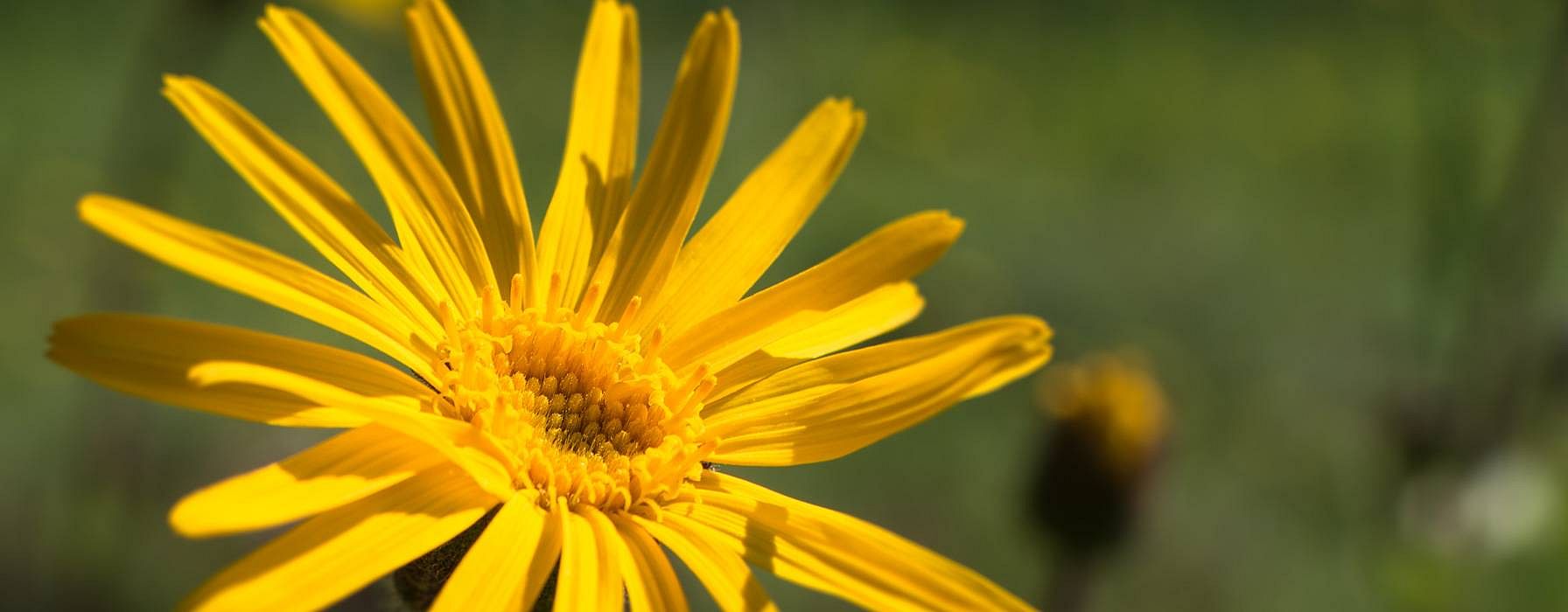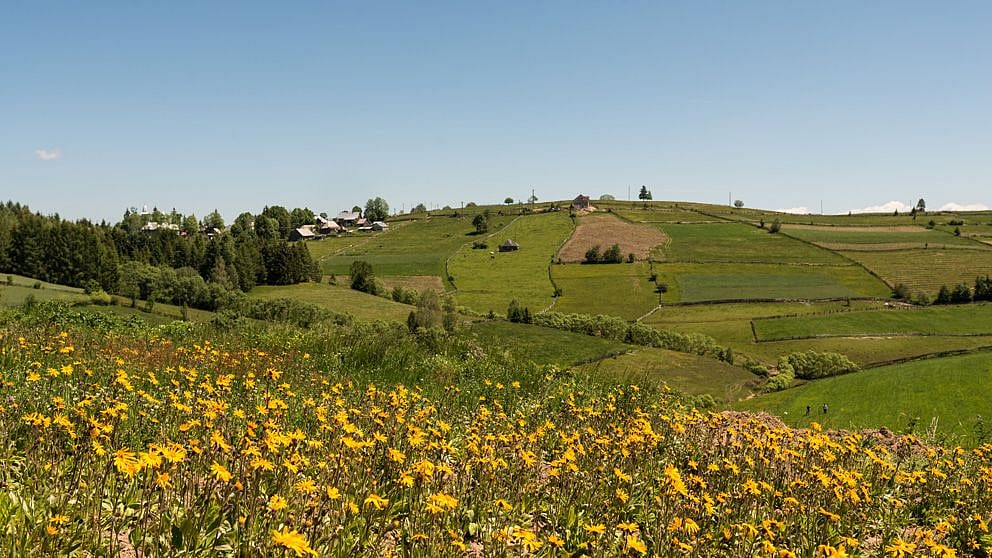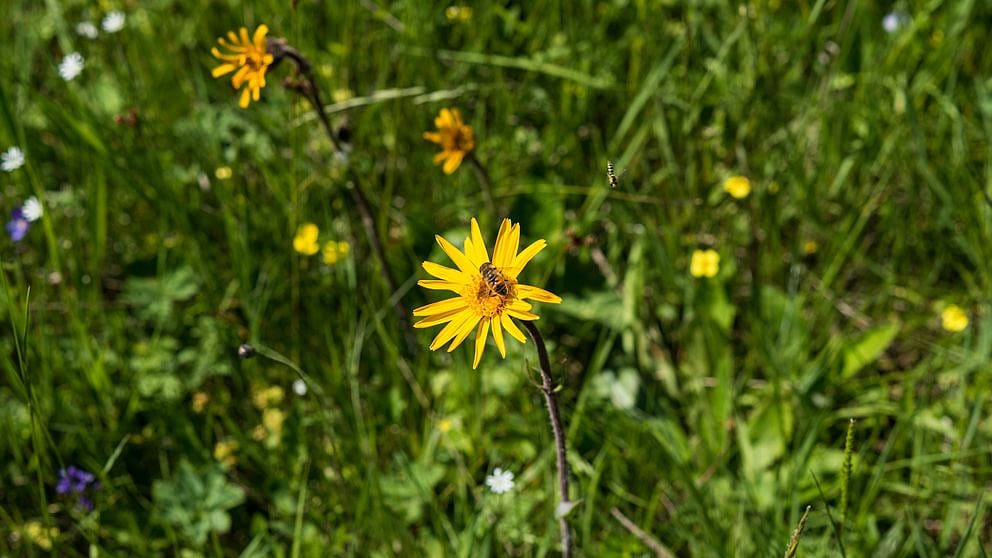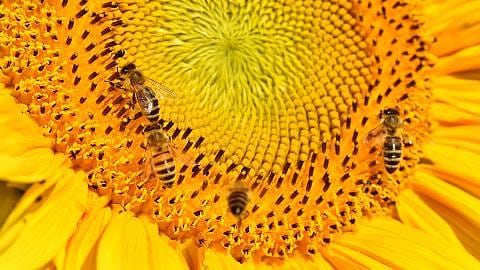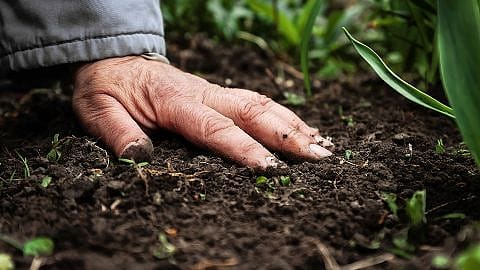Arnica prefers sparse meadows with acidic and decalcified soils
Arnica: Portrait of a Medicinal Plant
The healing power of the aromatic arnica plant has been used for centuries in the treatment of blunt injuries of all kinds, such as contusions, pinches, sprains or hematoma. More than 150 active ingredients have been identified.
Occurrence
The botanical name of the plant is Arnica montana. This hardy plant grows primarily in the mountains of central and southern Europe. It prefers sparse meadows with acidic and decalcified soils, and can be found in valleys as well as high altitude areas up to 2,800 metres above sea level.
Blossoms
Arnica belongs to the Asteraceae family, with its distinct star-like inflorescences. It blossoms from May to August. The arnica’s bright yellow petals are not symmetrically arranged, but look rather dishevelled. Each blossom has an individual appearance, as if it had an own personality.
Growth and Processing
The perennial herbaceous plant reaches a maximum height of 20 to 60 cm. Arnica has firm, hairy leaves and a strong stem that can withstand harsh mountain winds. Despite its ability to thrive in remote mountainous areas, arnica reacts very sensitively to changes in its natural habitat.
Arnica is harvested at full bloom, and depending on the intended use, its roots, stems, leaves and flowers are picked by hand. Arnica extracts help to reduce inflammation and swelling and support the body’s natural regeneration of damaged skin tissue. They also stimulate blood circulation, and so accelerate the healing process.
